Digital marketing has never been more in than it is right now. All the brands are adopting it, and for obvious reasons: it produces results.
The only issue is that millions of other people are fighting for the same attention as you are.
The harsh truth? Banking on the same ad strategies you’ve done for the last few years isn’t going to cut it anymore.
As your approach needs to change in 2021, we sat down with some seasoned digital marketing specialists from leading brands like Cosette Media, Square, Amazon, and more, to learn what exactly is going to work this year, and why. Let’s dive in!
Aishwarya Bhavsar, Marketing Manager at RBC Ventures
Pivoting strategies to cope with the soon-to-be cookieless world
Many marketers haven’t truly understood or just have conveniently overlooked the eventual phasing out of the third-party cookie. Safari and Firefox browsers have already reduced cross-site tracking ability by limiting the cookies and Chrome is to follow suit, leaving us in an unsweetened, ‘cookie-less’ world soon.
Not to forget the iOS14 debacle that’s bringing in many restrictions into the world of advertising and has left majority advertisers and publishers uncomfortable to say the least.
Third party cookies, mainly from a digital advertising perspective, have been crucial as they provide the ammunition to serve personalized ads, retargeting and enabling advertisers to conduct detailed analysis.
In 2021, brands and marketers together will need to revisit their audience strategies to focus more on how they can best pivot towards leveraging and developing their first-party data.
Whether that is developing a robust email marketing system or a lead generation campaign or something totally revolutionary, brands in 2021 will need to leverage tactics where they can collect information about their consumers first-hand.
Social media marketing will continue to remain in the spotlight in 2021
Due to the pandemic, we’ve not only seen a dramatic uptick in the social media user base but also the engagement. Social platforms will continue to prove to be an effective avenue for brands to connect with consumers, more than ever, as in-person customer experiences are heavily impacted in the wake of this global pandemic.
Platforms like Facebook are progressing to be almost like a one-stop-shop that can help brands to effectively tell their story, mission and touch user’s lives through their social media presence and deliver true engagement.
Social commerce, particularly, would also continue to grow as it provides a seamless path to purchase from prospecting to conversion. It will be crucial for marketers to adapt to these new avenues that not only help potential customers discover the product/service, deliver innovative online experiences, but also drive purchases without having to leave the platform!
Influencer marketing is here to stay and grow
Today’s marketing efforts are following the consumer demand to move away from superficial and sales-focused content to a more purposeful, value-driven approach.
Brands are therefore searching for effective ways to connect and share their message with their target audiences without sounding salesy. This is exactly what influencers enable brands to achieve.
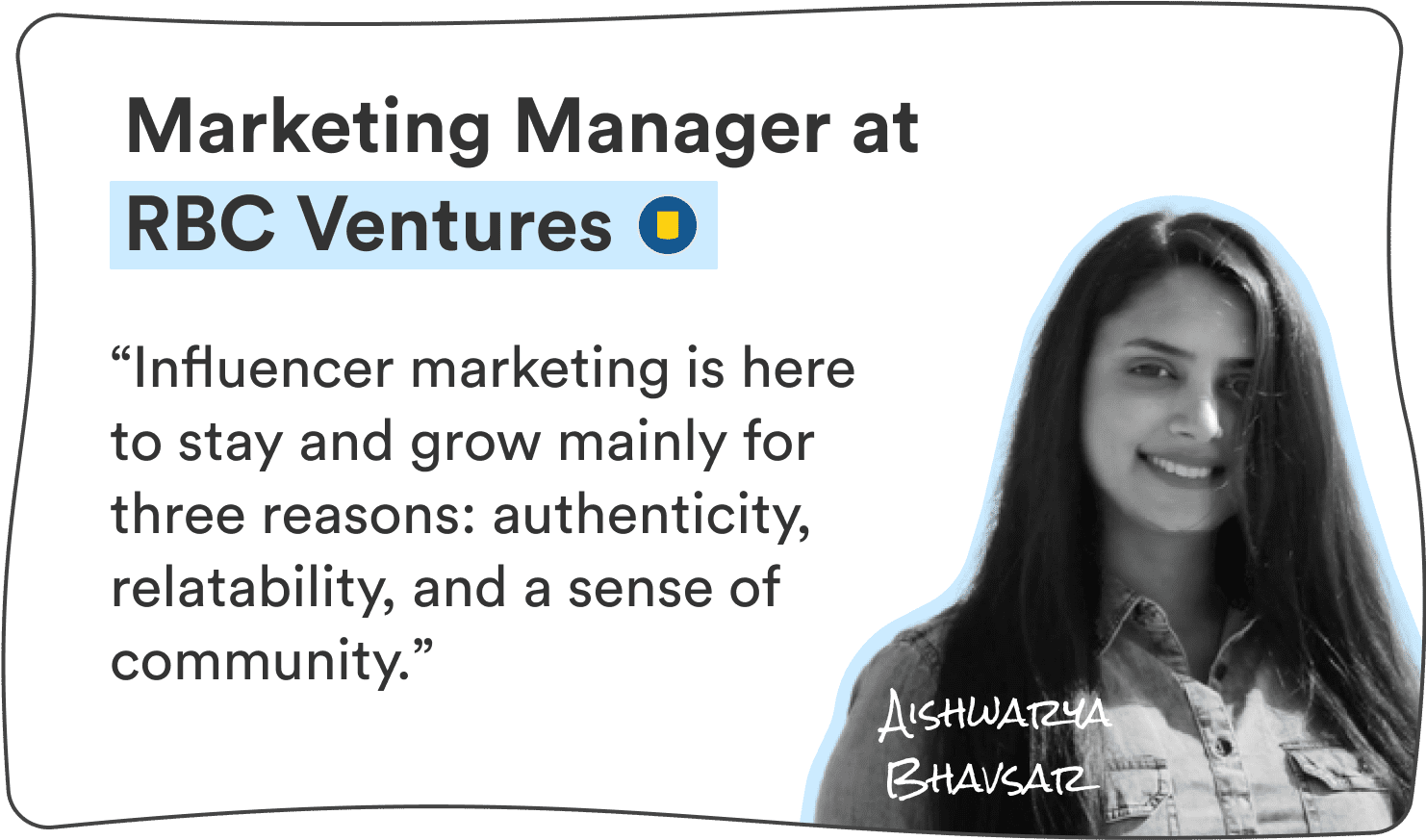
In 2021, brands will likely invest in long-term relationships with genuine influencers versus one-off campaigns to together develop a valuable, loyal consumer base. It’s interesting to see how brands have always attested to content’s credibility but now, the content creators will bring credibility to the brands.
Influencer marketing is also overcoming one of the main issues it has been facing – trackability. As the investment in influencer marketing grows, platforms like Facebook are continuing to build measurement tools for these campaigns which will only become more robust in time to come.
Interactive ads are vital to keep consumers engaged and make them feel recognized
As a consumer, we’re loyal to brands that take our feedback constructively or act upon our recommendations. When we talk about personalization, what we truly are seeking from brands is the feeling of being ‘heard’ or ‘recognized’. Interactive ads is one of the ways that brands can implement personalization and develop a more valuable and personal connection with their target audience.
When I’ve personally experimented with messenger bots or experiential display ads, it has almost always resulted in better engagement which in turn has resulted in an impressive ROAS as well.
Not to forget, interactive ad formats such as videos or Instant Experience ads on Facebook or Instagram also help in developing a retargeting pool based on users who engage with them which later can be re-targeted with relevant ads. This is an excellent use case for leveraging interactive ad formats especially in the times where the cookie is diminishing and retargeting opportunities are narrowed.
Interactive ads not only help in effective performance but also aid in telling a story, creating a lasting impression and heightening brand recall.
Not to forget, when users interact with polls, for example, this also serves as a thermometer for the brands to gauge user preferences which can further help brands to develop certain products or pivot their marketing strategy.
Chantelle Marcelle, Sr. Manager, Customer Acquisition & Brand at Herrmann
Community and authentic engagement
Digital marketing is becoming increasingly about community building and authentic engagement. Last year, brands had to look for ways to exhibit more warmth and compassion in response to the challenges customers faced relating to the pandemic, economic downturn, and social unrest. This is going to continue in 2021.
Customers are using their spending as a way to reflect their sense of self-identity, so brands have to show that they align with customer values and concerns. I think we’re also going to see more innovation and creativity when it comes to digital campaigns.
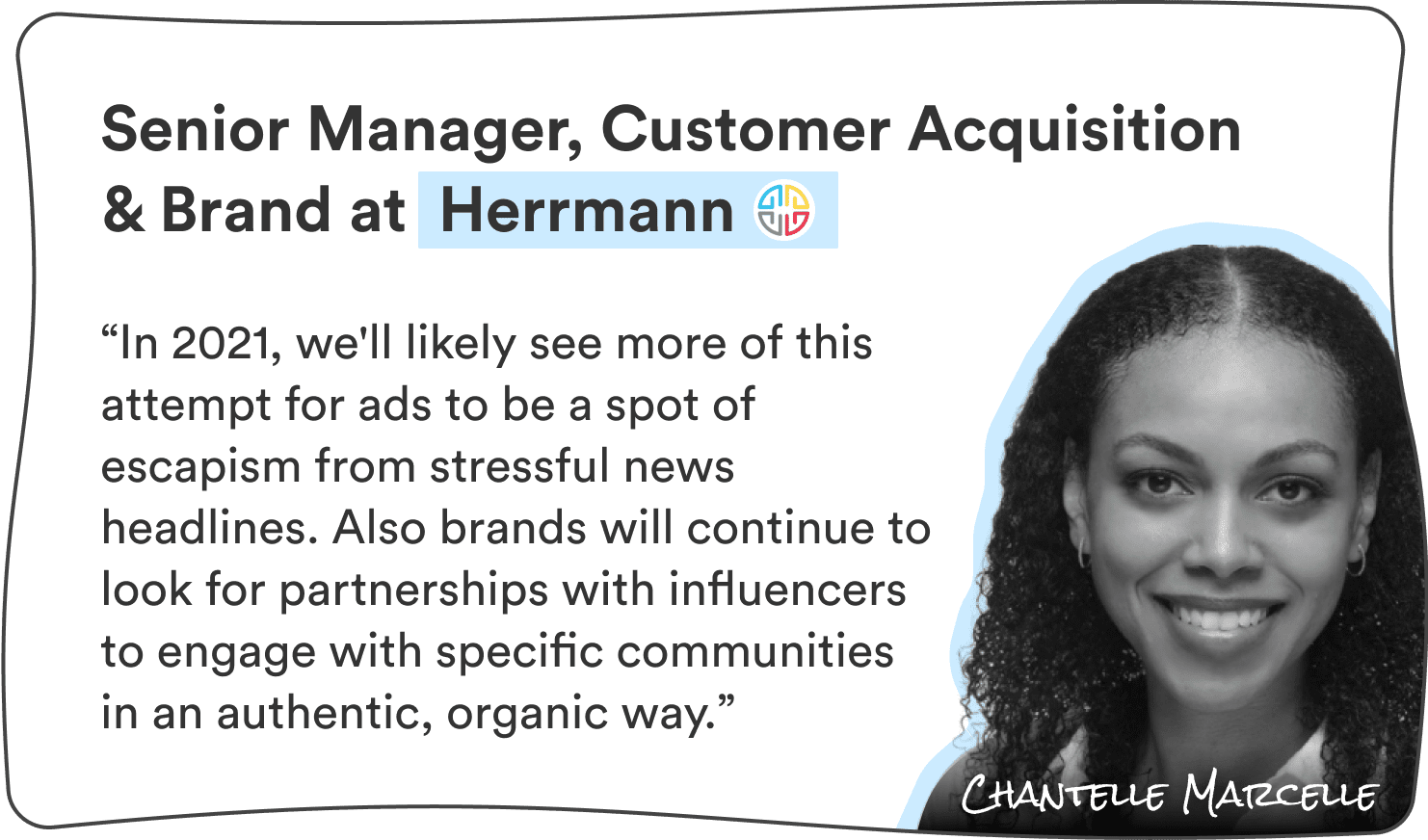
People are tired of the same old podcast and webinar formats. The most successful marketers will be those who can figure out how to push boundaries and excite their audience with new, interactive virtual experiences.
A lot of ads in 2020 leveraged nostalgia to evoke a sense of comfort and warmth in audiences, such as Airbnb’s collaborative campaign with Blockbuster and the Fresh Prince of Bel-Air.
Chiara Grigolini, Global Digital Content Marketer at Affinity Petcare
Ad creatives in 2021 will be about authenticity
In a scenario where budget could be limited, brands need to start conversations with consumers who are looking for real connection and trustworthy information so I think earned media will take an important role in this case. I’m not just thinking about blogs, but also about platforms like Live Events that became popular during the quarantine.

With regards to paid channels, the must-haves (Facebook, Instagram, Google, YouTube) will always be there, while, among “newer” channels, I found TikTok particularly promising as it grew +75% in 2020. Still, I’d recommend brands testing this channel only if their target is actually there.
In a nutshell, I think ad creatives in 2021 will be about authenticity. Today, consumers want it all: quality, a flawless and tailored experience, value orientation, price, newness. It won’t be enough to simply say “just do it”.
So the four principles that will guide me to create relevant ads in 2021 will be:
- Human connection. More than ever, consumers are craving for it. They ask brands to provide solutions to their needs. To achieve this, brands must listen to them through users’ data, surveys and NPS, and – more difficult – be agile in taking action on the findings.
- Value proposition. Many brands have always been shy in “marrying a cause”, but last year, the #BlackLivesMatter movement broke the silence, and I think it was just the beginning. Consumers are expecting brands to not just provide value to them only, but also to the society and environment.
- Pragmatism. In a world where both companies and consumers are suffering from the economic crisis, and have to select carefully where to invest and what to buy, I think we should create ads that stick to their needs in a clear and truthful way.
- Mind the platform. Old but gold tip: create specific ads for each platform. It’s not just a matter of different placements. The consumer is expecting a totally different type of content in each platform. For instance, TikTok is a world itself, and the user is expecting a type of content that is consistent with the one they create.
Charit Anchan, Digital Marketing Manager at Amazon
Creating personalized experiences through video ads
Video is obviously the front that most brands are going to be fighting for. No matter what it’s for – webinar, classes, course, virtual events, social, or more. I think that there are still gaps for brands to explore in other forms of video.
Short-form video is about to see a big rise in popularity with TikTok, Reels, and Facebook taking off. Also, live videos on Facebook and LinkedIn will continue to soar, helping B2B companies stand out from their competitors.
What not to do in 2021? I think clickbait has all but died its death. If you’re employing clickbait headlines in your work, chances are, you’re doing this because you want a high number of page views. Unfortunately, this is an incorrect way to measure success.
The Internet has allowed untruthful materials to spread and, as a result, this has led to a crackdown on clickbait. Since social media giants like Facebook have announced changes to its algorithms to combat this type of content, consequently, those marketers continuing to use clickbait tactics might be penalized by social media networks in the future.
I think this year will be more about personalized marketing and offering an improved user experience (UX) by serving relevant content, or targeting key messages in the funnel, based on your customer’s behavior. So I think marketers will focus a lot more on retargeting ads.
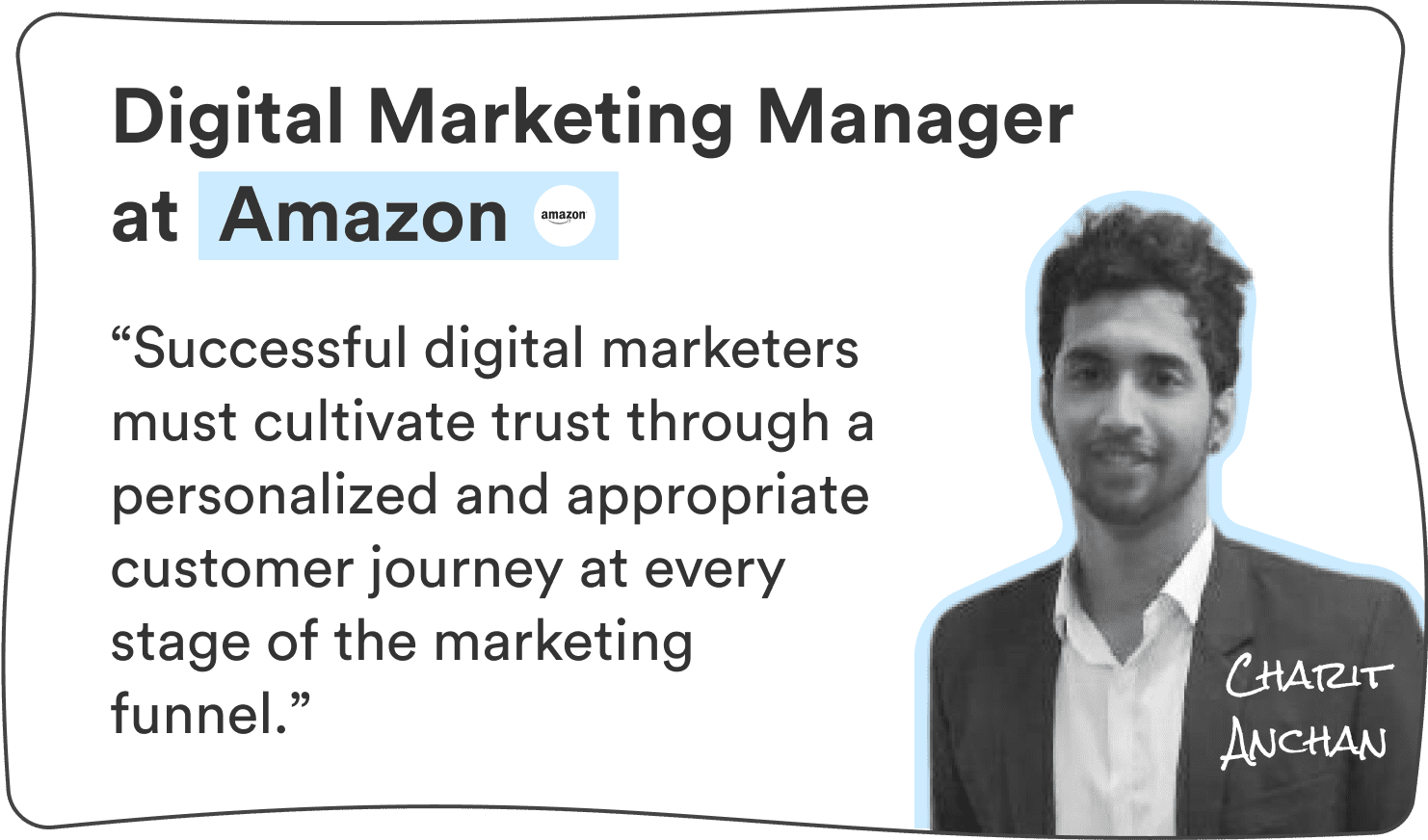
As customers communicate through diverse digital marketing channels, especially now people are leading an enhanced digital lifestyle, marketers feel more driven to connect them across all the channels customers frequent the most.
Following some basic ground rules has always worked for me. I normally follow things like:
- Know what my target market wants
- Come up with a few common objectives for my services or selling points, and address those proactively in my ad copy
- Regular testing is one of the surest ways to make real improvements in your ads. The more data you collect, the more patterns you’ll start to spot, and the better you’ll be able to adjust your ad strategy
- Say “no” to jargon and “yes” to simple language
- Take advantage of remarketing
- Leverage video-based ads
Moritz Lang, Digital Marketing Specialist at Soundtrack Your Brand
Capturing attention with entertaining and creative content
Social media and community-building will increase their importance and creative content marketing continues to thrive and further diversify (mostly in the form of live, video, and audio).
Businesses should focus on building a strong funnel, improve every step consistently and implement rapid experimentation processes to optimize marketing campaigns and overall business performance.
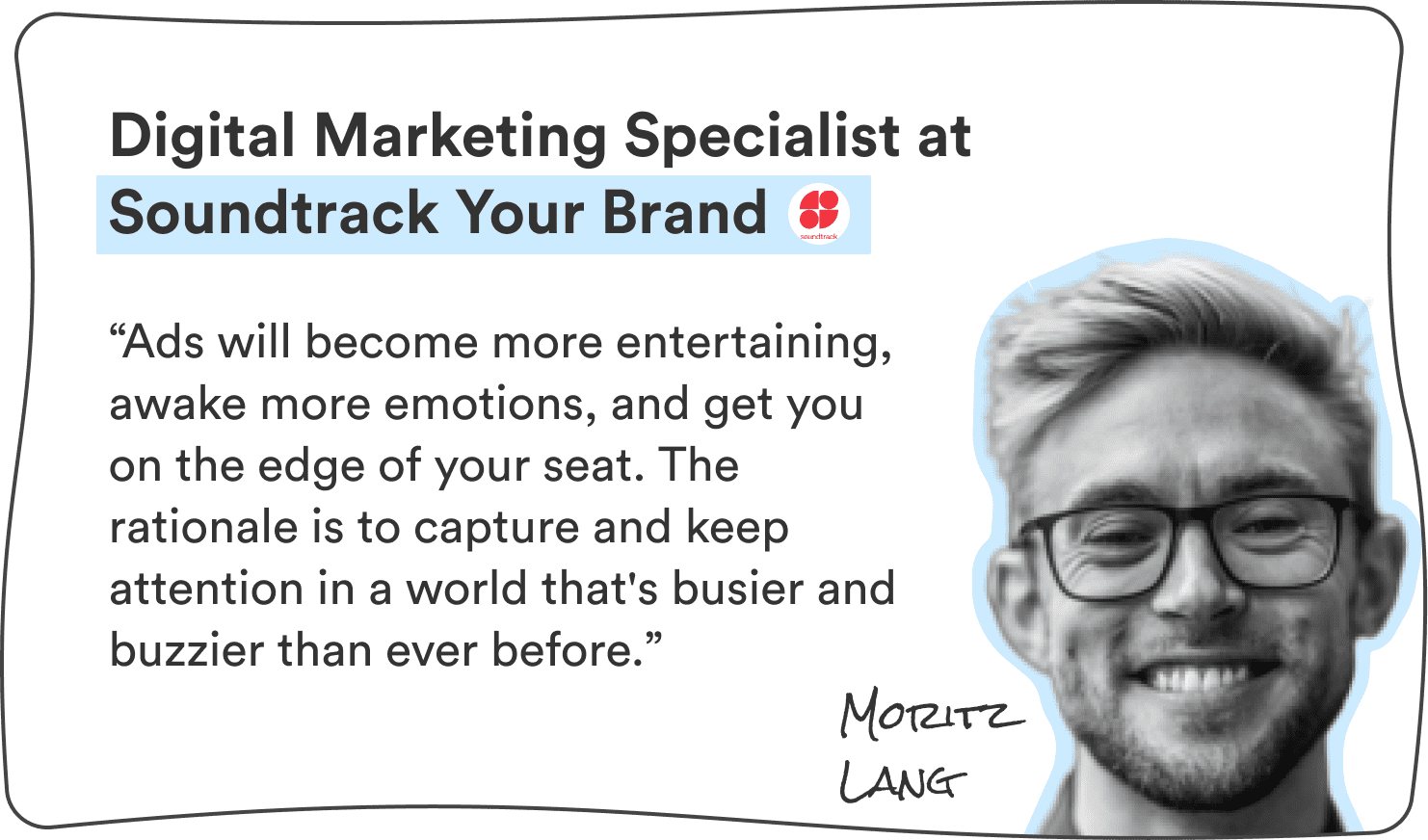
With an increasingly quick rate of innovation, it’s important to not only focus on new tactics, but always follow a solid strategy covering the core pillars.
It’s going to be interesting how digital marketing might change due to the iOS 14 update. Having a good ad strategy is key to refine your targeting and find the most profitable audiences. This is now severely threatened.
At the same time, ads will become more entertaining, awake more emotions, and get you on the edge of your seat. The rationale is to capture and keep attention in a world that’s busier and buzzier than ever before.
Finding your ideal target audience and addressing them in the right tone of voice and in the right channels is more important (and at the same time more complex) than ever before.
Aleia Gland, Performance Marketing Manager at Square
Genuine relationships between brands and communities
People want businesses that reflect their values. Amidst the pandemic, there was a renewed global Black Lives Movement addressing racial injustice. For many consumers and brands, 2020 served as a necessary interruption to ‘business as usual’ and a wake-up call for those who hadn’t been paying attention.
Unprecedently, we began to see concentrated strategies for connecting with Black communities were now on the agenda. In 2021, I believe that we will see that the groundwork that was laid in 2020 will come to fruition.
We’ve already started to see some of those pivots such as Netflix’s dedicated category to Black filmmakers, or banks that now have specific customer strategies for Black communities to personalize their marketing efforts.
Customers have been holding companies accountable for the commitments they make, and continue to drive a responsive and conscious approach to business.
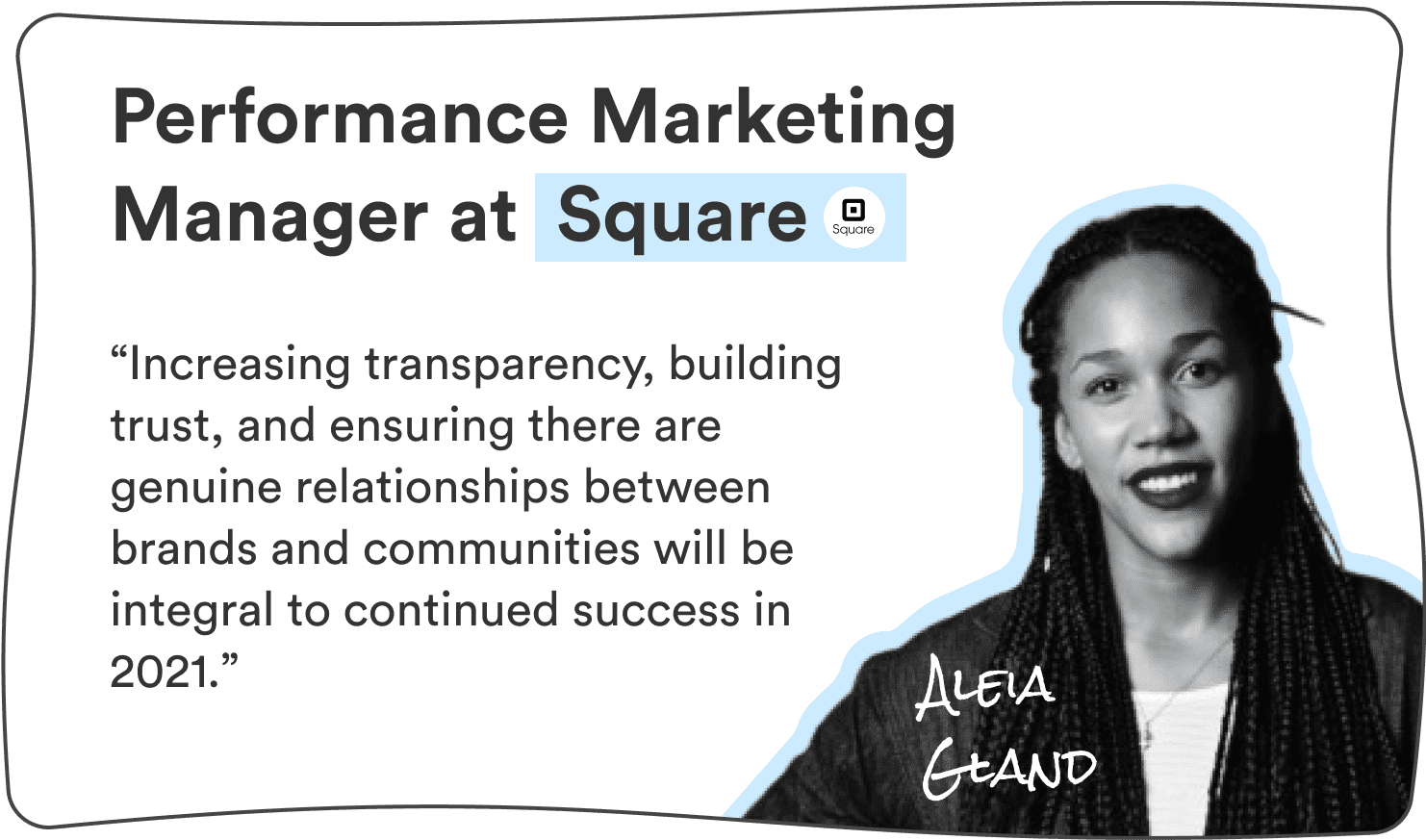
There are many different strategies and various technological solutions to go to market with personalized ads. However, before that, I believe we need to take a step back and ensure that the right people are employed at your company.
The first step to creating more personalized and relevant ads is ensuring that brands themselves have the right people around their table. Employing and supporting Black employees and others from marginalized backgrounds is foundationally necessary to producing authentic content and marketing strategies in a country as diverse as Canada.
With the underrepresentation of Black people in marketing and racialized people more generally in positions of leadership, there are a number of great organizations working to close the gaps like POCAM and Icon Talent Partners.
Prativa Pillay, Marketing Director, FMCG, sub-Saharan Africa & Indian Islands
Dynamic video content which delivers entertainment
The quest for digital marketers in 2021 subsists in the subtle art of maintaining relevance, targeted penetration, and frequency as factors for reconnection. Today, the influence to purchase is heavily diluted by a frenzy of pandemic reactivity in the over-production of content with numbing sameness.
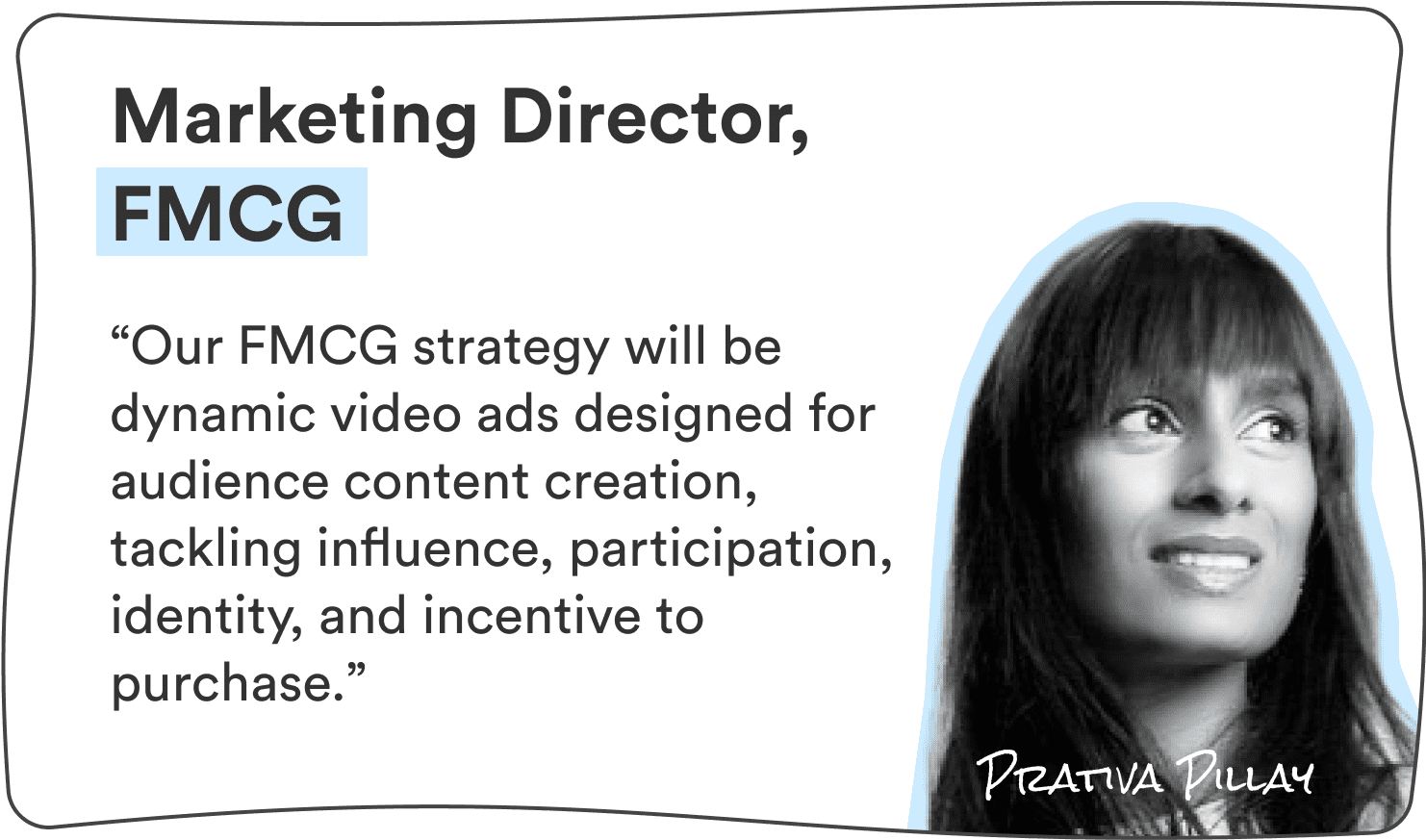
What will work? Entertainment. Video content has largely replaced all “Through The Line Marketing” (TTL) strategies. This is a huge opportunity for Ad Tech to answer to brand propositions seeking to entertain.
Dynamic video innovations which seek to deliver entertainment in captivating content will generate product sales. What won’t work? Copy-cat campaigns which are unlikely to achieve growth.
Our FMCG strategy will be focused on dynamic video ads designed for audience content creation, tackling influence, participation, identity, and incentive to purchase. It doesn’t get more personal than self-involvement with the brand world.
Connecting the dots
Your digital marketing is no longer as simple as blasting out ads to everyone and calling it a day.
Millions of other marketers are competing for their audience’s attention, devising strategies and tactics that will impact your ability to stand out.
In 2021, don’t fall behind repeating the same ad strategies that worked in the past few years.
Instead, break ground with contextual content, be tactical about privacy issues, and engage with the community in an authentic way to actually drive results.
If you’d like to read similar pieces, we’re delivering the same level of quality insights from top industry leaders right into your inbox once a month. Let’s connect! 💌
